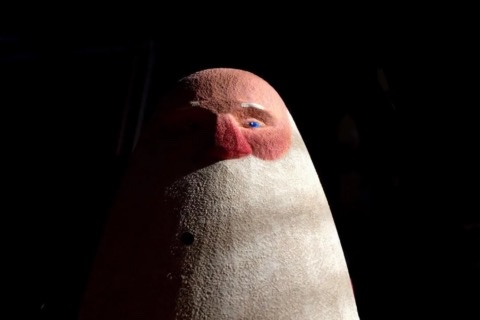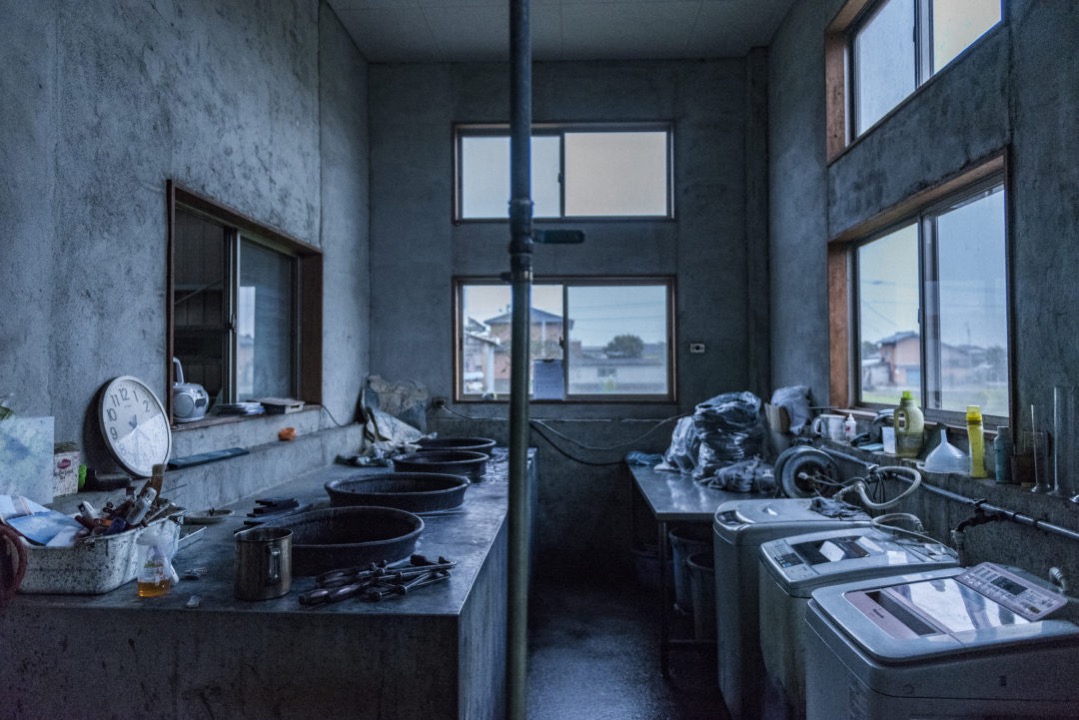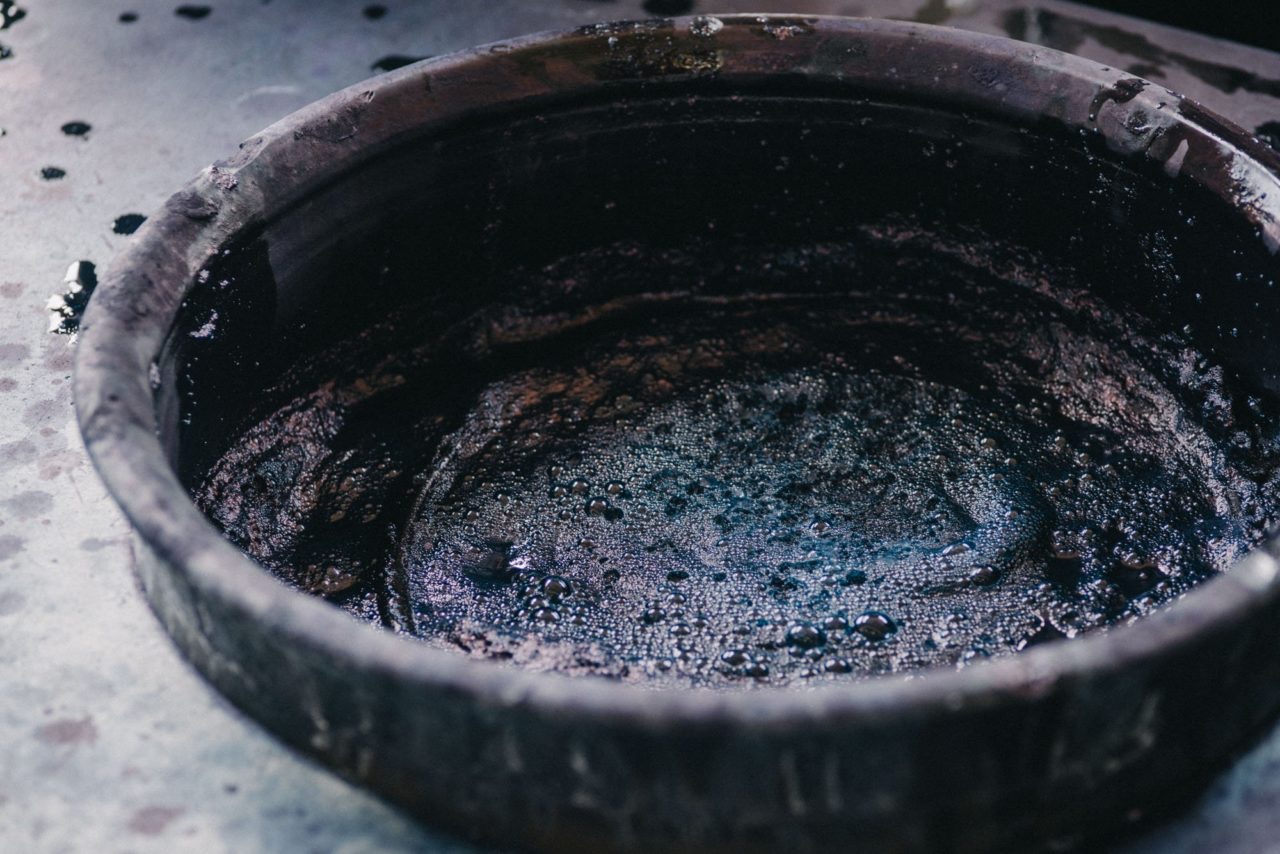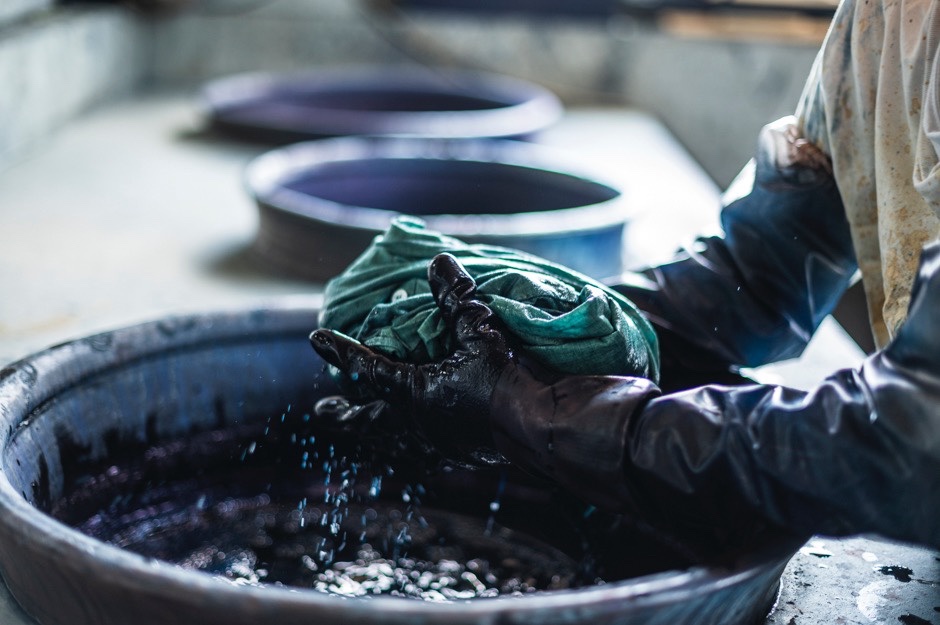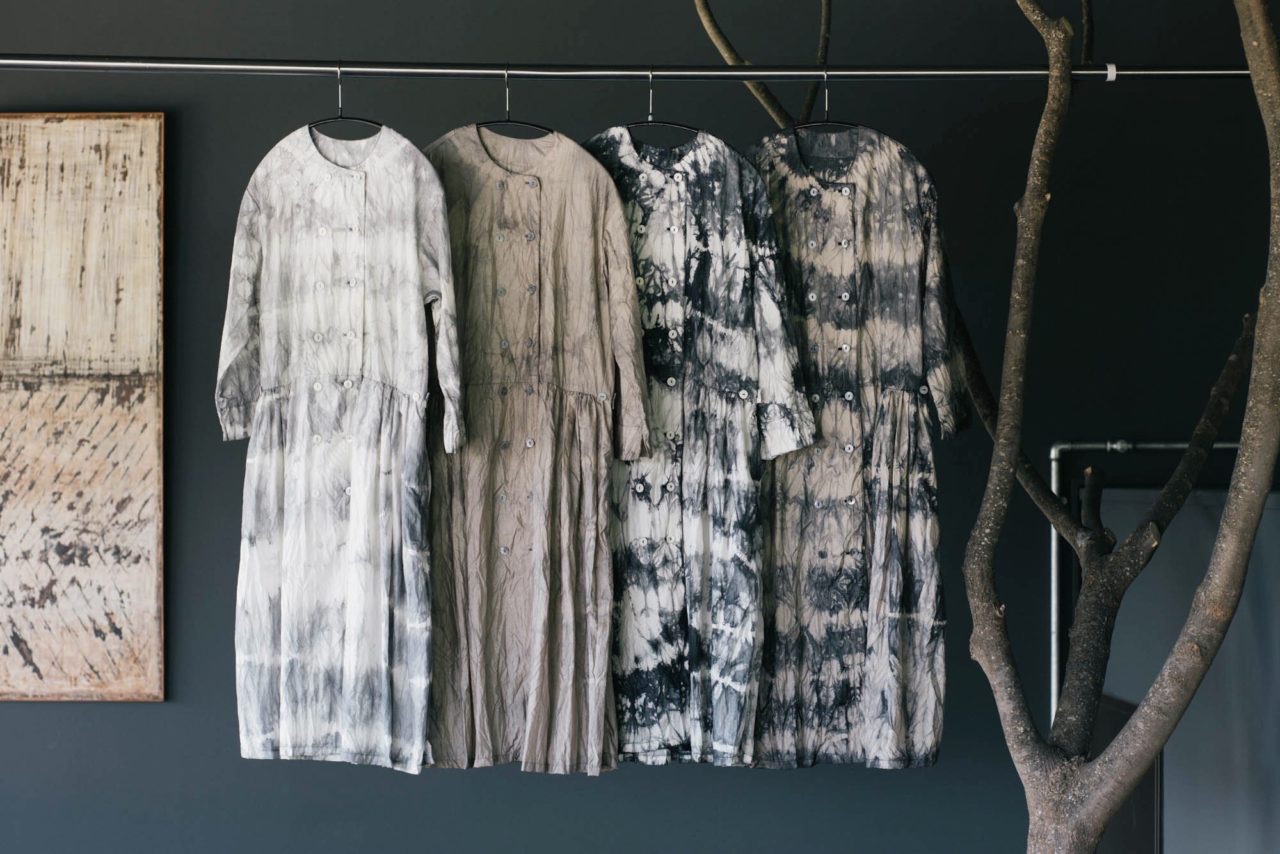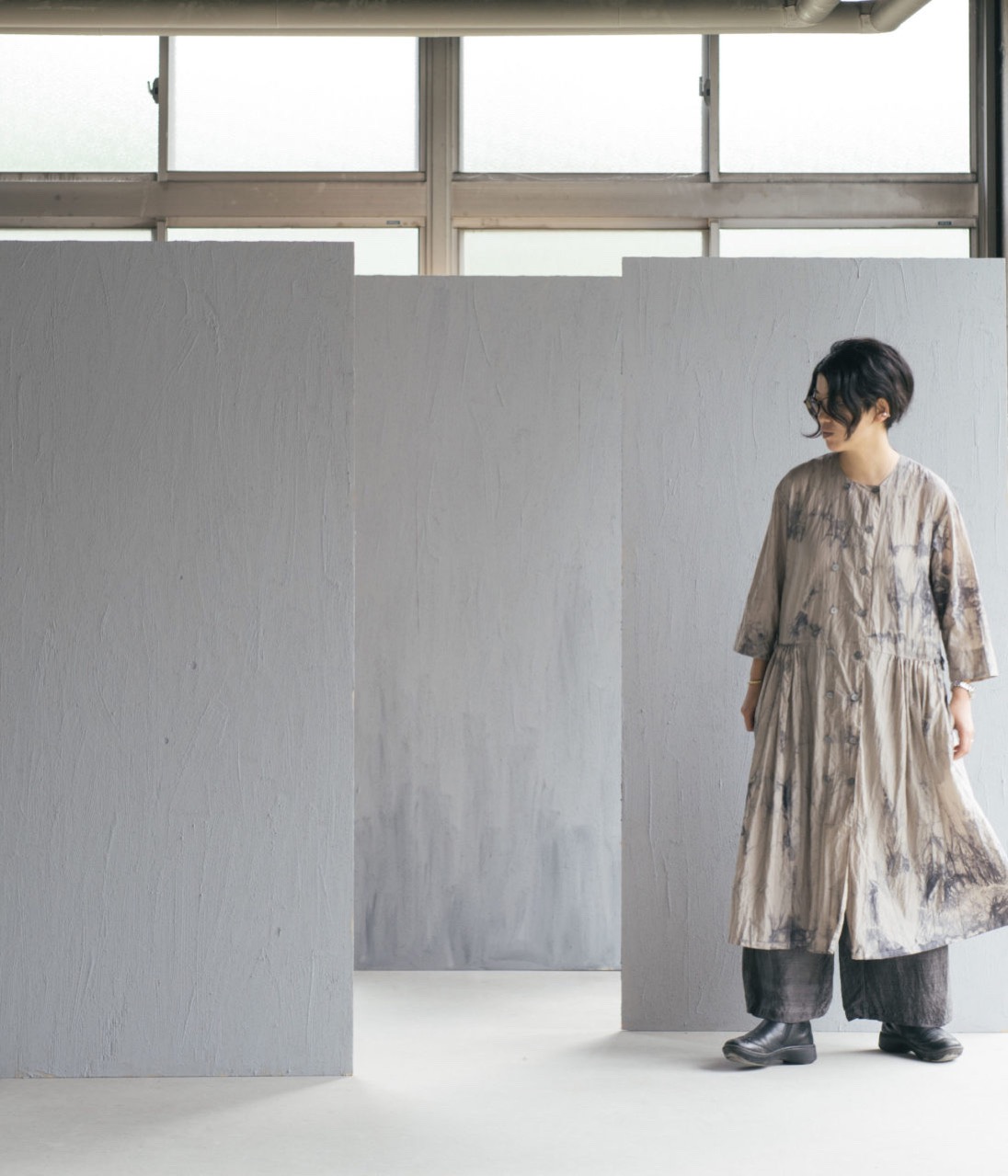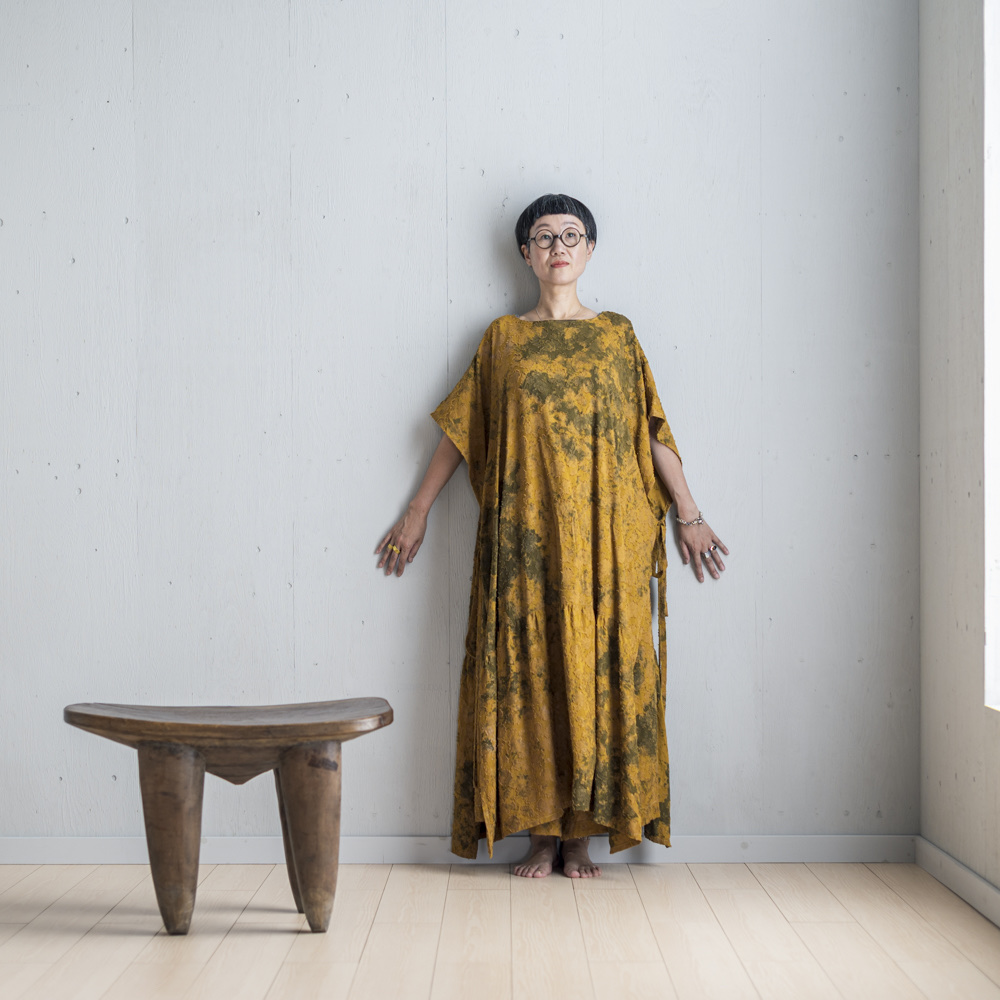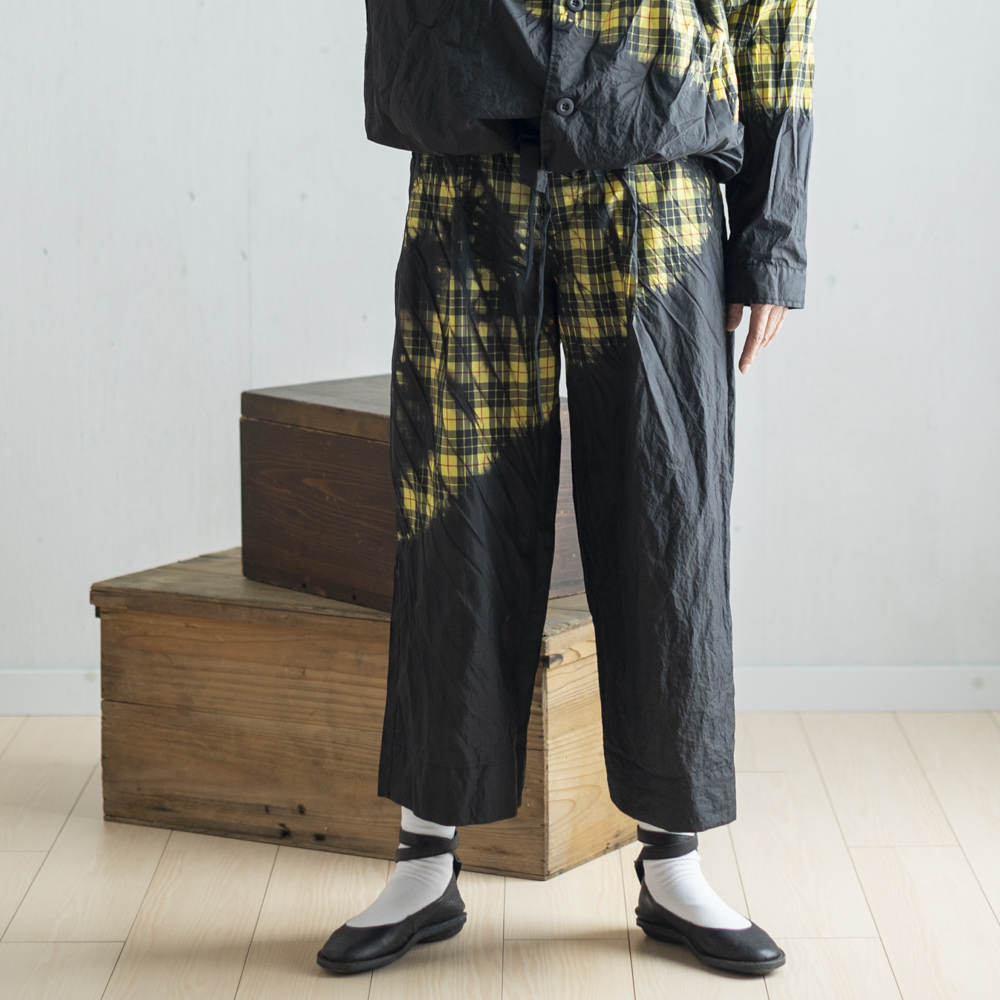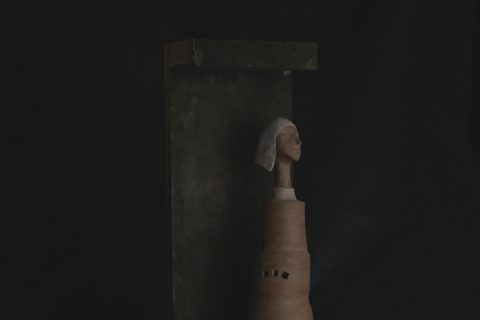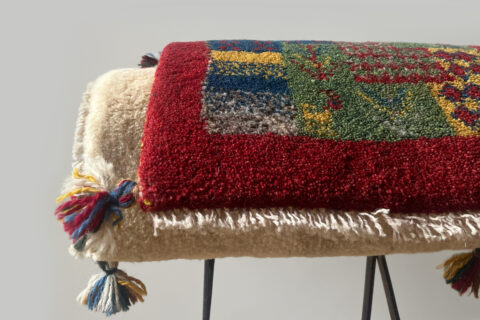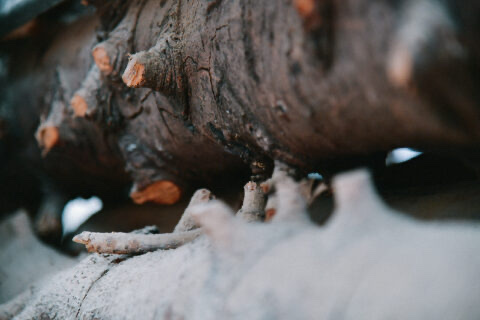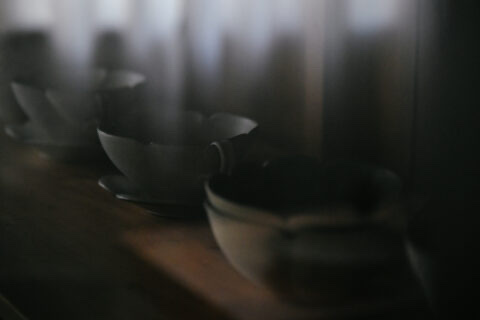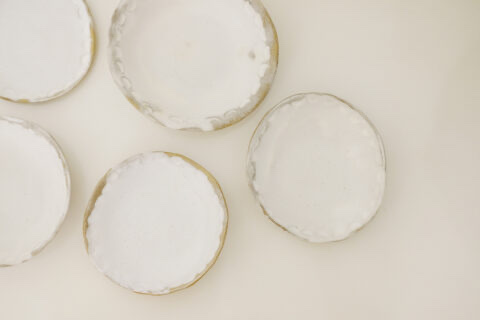「天然染的樂趣和誠實,是無法用言語表達的。」
位於福岡的染色工房「宝島染工」在2001年由大籠千春創立,只使用草木和傳統木材製成的天然染料,舉如植物葉子、花朵、根莖、樹幹、水果、泥土、木炭、茶與咖啡、海藻等等,沿用著古老流傳下來的染色方法,由人手將色彩染到每塊布料上。「天然染是與日常生活息息相關的智慧。」其實最好的一早已存在於自然裡,如果發現,並因為了解而珍惜地使用,那就會是最美好的循環。
“The joy and sincerity of natural dyeing is beyond words.”
Located in Fukuoka, Takarajima Senkou is a dyeing workshop founded by Chiharu Ogomori in 2001. The workshop prides itself for adopting traditional hand-dyeing methods and only using dyes that are made from natural materials such as leaves, flowers, roots, tree trunks, fruits, mud, charcoal, tea, coffee, seaweed, etc. “Natural dyeing is the wisdom distilled from the daily.” As a matter of fact, nature’s finest is always out there, waiting to be found, cherished, and made use of.
工房特別擅長紮染技術,透過捆紮、折疊、用夾板固定、上蠟等方式遮蓋造成留白後,便將布料浸到染缸裡。在一次次累積下色調會漸濃,拿出後與空氣接觸,色調會開始變化,起初是淡粉與微黃,隨著時間流逝,逐漸又會從綠變成藍。如同自然景色般,一直泡在變化裡,是一種流動的顏色,也帶著獨有的一種透明感。每個工序都由工匠雙手完成,當看到過那有多繁複多冗長,定會讚歎每一件都是如何製造出來的。如果要造出差不多的顏色,便得靠經驗熬出的精準,改變浸泡時間與次數。
Takarajima Senkou specialises in Shibori (tie-dye). It is done by tying the fabric with threads or by folding and then binding it by plates, and then sealing it with wax before dyeing in order to prevent the dye from reaching those parts of the fabric. The longer the fabric is soaked in the dyeing liquid, the darker color it will get. Yet, such color will change as the dyed fabric dries in the air. From light pink and pale yellow, to green, and eventually blue, the transformation of color mimics the perpetual transition of seasons. One will be amazed by the dedication and precision required to hand-dye a fabric — it requires years of experiences to get the exact same color every time.
「它們不是作品,而是產品,是以貼近日常生活的價格和設計製作出來的衣服,想讓更多人買到。」大籠千春想製作出任何人、隨時隨地都能穿的衣服,盡可能避免改變版型,也無性別與年齡區分,那麼即使穿到不能再穿了也能買得到新的替換。大量選用棉與麻的材質,舒適感滿滿才能久穿,在色掉落後也能重新上色。而布料平躺或掛在衣架上的時候,跟穿上後看起來又會完全不同,是衣服與人的身體結合後的趣味。也只有當美成為了平易近人的日常,才能讓天然染這珍貴技術保留下去。其實在化學染料出現之前,人們都在穿天然染衣服,天然染料譬如靛藍,是日本最古老的染料,有驅蟲、除臭、殺菌等藥用性,當時也會用來顯示身份階級,從實際用途到體現美的形式,被一直使用流傳下來,而現在已變得非常珍貴。
像熬湯,天然染的魅力在於每個微小差距,它的色彩光譜非常廣闊,即微小也因而巨大,每一件都體現著人與大自然與時間結合起來的力量,裡面彷彿能讓人看到魔法的存在。
“They are not art pieces, but products. They are clothes that are priced and designed for everyday life. I want more people to buy them.” Ogomori strives to make clothes that can be worn by people of all sizes, ages, and gender at any occasions. She believes that the design and cutting of clothes should stay the same over time because it will help the customers to easily find a replacement when their clothes are completely worn out. In terms of materials, Ogomori opts for cotton and linen mostly as she believes that they are comfortable, durable, and can be re-colored after the dye fades. It’s interesting to note that Ogomori’s products look completely different when they are on display and wear on the body. To preserve the tradition of natural dyeing, it is essential to make dyed products a part of everyday life. In fact, long before the introduction of chemical dyes, the use of natural dye was nothing but common. For example, indigo, which has the medicinal properties of insect-repellent, deodorization, and sterilization, has been treasured by Japanese people since ancient times and was especially popular amongst the lower class in feudal Japan.
Natural dyeing is similar to making a hearty soup — every step and every ingredient counts. One can easily see wonders in each and every piece of the dyed work for it is a reflection of impeccable craftsmanship and nature’s beauty.
